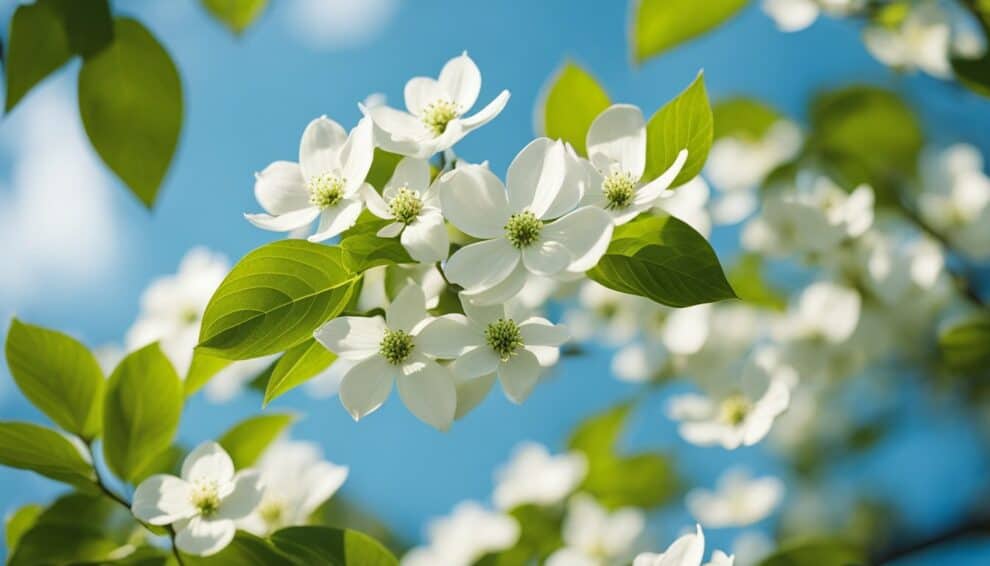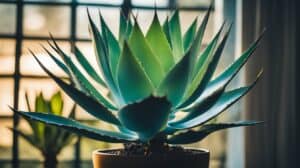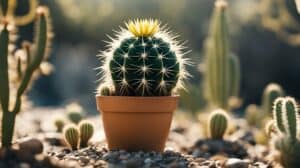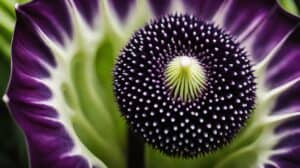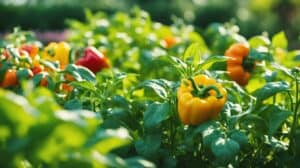Cornus Kousa, commonly known as Kousa dogwood, is a small flowering tree that is native to East Asia.
It is a popular choice for gardeners due to its beautiful white or pink blooms in late spring and early summer, as well as its attractive red berries in the fall.
In this article, beginners will find all the information they need to know about growing and caring for Cornus Kousa.

One of the most appealing features of Cornus Kousa is its versatility.
It can be grown as a small tree or a large shrub, making it suitable for a variety of garden settings.
Additionally, it is relatively easy to care for and is resistant to many common pests and diseases.
Whether you are a seasoned gardener or a beginner, Cornus Kousa is a great choice for adding beauty and interest to your landscape.
In this article, readers will learn about the ideal growing conditions for Cornus Kousa, including soil type, light requirements, and watering needs.
They will also discover how to properly prune and fertilize the tree to promote healthy growth and abundant blooms.
With this information, beginners can confidently add Cornus Kousa to their garden and enjoy its many delights for years to come.
Getting to Know Cornus Kousa

Cornus Kousa, also known as Kousa Dogwood, is a deciduous tree that is native to East Asia, including China, Korea, and Japan.
It is a popular ornamental tree that is loved for its stunning flowers and attractive bark.
Origins and Characteristics
The Cornus Kousa tree is a small to medium-sized tree that can grow up to 30 feet tall. It has a rounded shape and a dense canopy that provides ample shade.
The tree is known for its beautiful flowers that bloom in late spring to early summer.
The flowers are small and star-shaped, and they come in shades of white, pink, and red.
The bark of the Cornus Kousa tree is another attractive feature.
It is smooth and grayish-brown when the tree is young, but it gradually develops a distinctive pattern of small, square plates as it ages.
The leaves of the tree are also noteworthy. They are dark green and glossy, and they turn a beautiful shade of red in the fall.
Varieties and Cultivars
There are several varieties and cultivars of Cornus Kousa available, each with its own unique characteristics. Some popular varieties include:
- ‘Milky Way’: This variety has large, white flowers that bloom in late spring.
- ‘Satomi’: This cultivar has pink flowers that bloom in early summer.
- ‘Gold Star’: This variety has yellow-green leaves that turn a beautiful shade of gold in the fall.
When choosing a Cornus Kousa tree, it’s important to consider the specific needs of your landscape.
Some varieties may be more suited to certain growing conditions than others.
Additionally, you should consider the size and shape of the tree, as well as its overall aesthetic appeal.
Planting and Care Essentials

Choosing the Right Location
When selecting a location to plant Cornus Kousa, it is important to choose an area that receives partial shade or full sun.
The tree thrives in well-draining soil and can tolerate a range of soil types, including acidic and alkaline soils.
It is also important to choose a location that is protected from strong winds, as the tree’s branches are prone to damage.
Soil Requirements and Preparation
Before planting, it is important to prepare the soil properly. Cornus Kousa prefers well-draining soil that is rich in organic matter.
The soil should be loosened to a depth of at least 18 inches and amended with compost or other organic matter.
If the soil is heavy and poorly draining, it may be necessary to add sand or perlite to improve drainage.
Watering and Nutritional Needs
Cornus Kousa requires regular watering, especially during the first few years after planting.
The tree should be watered deeply once a week, or more often during hot, dry weather.
It is also important to fertilize the tree regularly with a balanced fertilizer to promote healthy growth and flowering.
Pruning and Maintenance Tips
Pruning is important to maintain the shape and health of the tree. Cornus Kousa should be pruned in late winter or early spring before new growth appears.
Dead, damaged, or diseased branches should be removed, as well as any crossing or rubbing branches.
The tree should also be thinned to improve air circulation and reduce the risk of disease.
Regular maintenance, including watering, fertilizing, and pruning, will help ensure a healthy and beautiful Cornus Kousa tree.
Common Challenges and Solutions

Pest and Disease Management
Cornus kousa is generally a hardy plant, but like any other plant, it can be subject to pests and diseases.
Here are some of the most common challenges you might face when growing Cornus kousa, along with their solutions:
Pests
- Aphids: These tiny insects can cause damage to the leaves and flowers of Cornus kousa.
To get rid of them, you can use insecticidal soap or neem oil.
- Japanese beetles: These beetles can cause severe damage to the leaves and flowers of Cornus kousa.
You can remove them by hand or use insecticides.
Diseases
- Powdery mildew: This fungal disease can cause a white powdery coating on the leaves of Cornus kousa.
To prevent it, make sure the plant has good air circulation. If it occurs, you can use a fungicide.
- Anthracnose: This disease can cause brown spots on the leaves of Cornus kousa.
To prevent it, avoid overhead watering and remove infected leaves. You can also use a fungicide.
Weather and Environmental Stress
Cornus kousa is a tough plant, but it can still be subject to environmental stress.
Here are some of the most common challenges you might face when growing Cornus kousa, along with their solutions:
Weather
- Drought: Cornus kousa is drought-tolerant, but it still needs regular watering, especially during hot, dry weather.
Make sure the soil is moist but not waterlogged.
- Frost: Cornus kousa is hardy to USDA zones 5-8, but it can still be damaged by frost.
To prevent damage, cover the plant with a frost blanket or burlap.
Environmental Stress
- Transplant shock: Cornus kousa can suffer from transplant shock if it is moved from one location to another.
To prevent this, make sure the plant is well-watered before and after transplanting.
- Soil quality: Cornus kousa prefers well-drained, acidic soil. If the soil is too alkaline, you can add sulfur to lower the pH.
If the soil is too compacted, you can add organic matter to improve drainage.
Frequently Asked Questions

What are the best conditions for planting and growing a Kousa Dogwood tree?
Kousa Dogwood trees prefer well-drained soil and partial shade, although they can also tolerate full sun.
They thrive in moist, acidic soil and can grow in a variety of soil types.
It is important to make sure that the soil is not too wet or too dry, as this can lead to root rot or other issues.
How do you care for a Kousa Dogwood to ensure its health and vibrant blooms?
To ensure the health and vibrancy of a Kousa Dogwood tree, it is important to water it regularly, especially during periods of drought.
Mulching around the base of the tree can also help keep the soil moist and protect the roots.
Pruning should be done in the late winter or early spring to promote healthy growth and flowering.
What are some common issues with Kousa Dogwood trees and how can they be addressed?
Kousa Dogwood trees are susceptible to a variety of issues, including powdery mildew, leaf spot, and canker.
These issues can be addressed by maintaining proper watering and pruning practices, as well as using fungicides as needed.
How long does it take for a Kousa Dogwood to reach full maturity?
Kousa Dogwood trees typically reach full maturity in about 10 to 20 years, depending on growing conditions and other factors.
Can you eat the fruit of a Kousa Dogwood, and if so, how is it commonly used?
Yes, the fruit of a Kousa Dogwood is edible and is commonly used in jams, jellies, and other recipes.
The fruit can also be eaten fresh, although it has a slightly gritty texture.
What are the differences between the various types of Kousa Dogwood trees?
There are several different types of Kousa Dogwood trees, including the Chinese Dogwood, the Japanese Dogwood, and the Cornelian Cherry Dogwood.
These trees differ in their size, shape, and flowering patterns, and may have different growing requirements.
It is important to research the specific type of Kousa Dogwood tree you are interested in before planting to ensure that it will thrive in your growing conditions.






